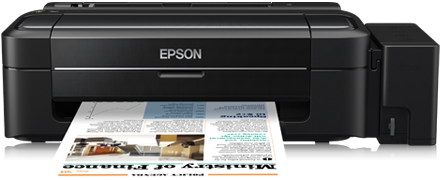It’s no surprise that a business famous for its printers says the world will continue to print. But it’s worth exploring why we believe this with such conviction when digitalisation continues to revolutionise every sector within industry. In short, while printing in the form most people will think of is here to stay, there’s also far more to printing than just ink on a page. There are multiple factors making it increasingly vital to organisations around the globe.
Print has become highly intelligent.
There have been huge advances in bio printing where organic and living materials can be produced for medical procedures, research, training and testing, in addition to developments in printing textiles, packaging, circuit boards and metals.
Today, exciting developments are taking place in healthcare. For example, 3D printing is already being used to print human organs. UK scientists have used stem cells to print human corneas. The proof-of-concept research for the 3D-printing technique saw human corneal stromal cells being taken from a healthy donor cornea and then mixed with alginate and collagen to create a ‘bio-ink’ solution that could be printed. But it’s not just the healthcare industry that’s making waves. The use of 3D printing for the creation of foods has moved into the spotlight over the last few months as it continues to expand steadily. International deep-tech food company Steakholder Foods Ltd announced the release of a new, 3D printed meat inspired by the famous Japanese Wagyu beef.
Not only is this technology highly innovative. It also offers a solution to some of the pressing environmental issues that the world is facing. Currently, industrialised meat farming is one of the biggest contributors to climate change but in this instance, slaughter-free foods help to make food production more sustainable.
Industrial solutions
Secondly, we are welcoming in a new era for industrial printing. Compared to traditional methods, digital printing has accelerated in recent years as the capabilities for packaging, textiles and labelling have expanded. Digital printing technologies are more sustainable than traditional analogue alternatives and offer a way forward to clean, efficient, profitable, localised manufacturing. When looking specifically at the fashion industry, major factors driving the adoption of digital printing result from the drive for sustainable practices, including water efficiency and reduced chemical wastage. In fact, digital textile printing can save as much as 95 per cent of industrial water usage, while energy consumption can be reduced by 75 per cent – leading to the minimum use of resources.
Through shortened supply chains, on-demand production and nearshoring, which are all possible because of digital printing, organisations can improve their environmental footprint, as well as their efficiency, quality and costs.
In the office
With a pressure to boost sustainability goals, careful technology selection can have a major impact when it comes to office printing. In the last few years, commercial inkjet products have been gaining traction as they use up to 90 per cent less energy and create less waste than equivalent laser printers. Epson inkjet printers use Heat-Free Technology which means heat is not required in the ink ejection process. Instead, pressure is applied to the Piezo element, that flexes backwards and forwards firing the ink from the printhead. In contrast, laser printers need to heat a fuser to enable printing, which results in significantly more energy consumption, CO2 production and increased costs.
And finally, home printing is on the rise. To unlock the benefits of hybrid work, organisations need to address home worker print requirements. Now, more than ever, certain factors are bringing these requirements to the fore, from spiralling energy costs to higher expectations when it comes to the standard of living and working. Chosen carefully and used well, printers can help cut costs, reduce energy consumption, and improve outcomes in many ways – from sustainability and workflow, to reducing lost hours of work.
Printing has an exciting future, especially as organisations continue to embrace innovative technology and materials that go beyond the imagination. The fact that we continue asking whether the printing industry is dying is a testament to its future.


